Have you ever dreamt of traveling the world and making a living from it? I know I have. Choosing to start a travel blog may just be the right motivation you need. And no… you don’t need to be a flight attendant or get a job working on a cruise ship to make this dream a reality.
Enter: learning how to start a travel blog. The best part about travel blogging is that you don’t need any formal training or a degree in order to start doing it today.
If you’ve been bitten by the wanderlust bug and want to launch your own (profitable) travel blog, then you’ve come to the right place.
Over the past 10 years, I’ve grown my own blog (this one) to reach over 4.4 million annual readers and have learned how to make money blogging to the tune of more than $450,000/year in revenue from this blog. I share this not to brag, but to illustrate that you’re learning from someone with real, practical blogging experience.
In this guide, I’m going to show you how to start a travel blog—and even how to do it on the side if you’re still working a full-time job. This process is based on both my own experience with launching a side outdoor blog, Hike with Ryan—and real-world advice from several successful travel bloggers I’ve had the pleasure of interviewing on my podcast.
Now, let’s buckle up and get ready for an awesome journey.
How to Start a Travel Blog (and Make Money) in 8 Easy Steps
- Pick a Smart Travel Blogging Niche
- Choose Your Travel Blog’s Name (Wisely)
- Select a Blog Hosting Platform
- Design Your Travel Blog
- Plan Your First Travel Blogging Trip (and Involve Readers)
- Balance Content Creation with Traveling
- Traffic: How to Get Readers to Your Travel Blog
- Monetize Your Travel Blog with These 5 Methods
Disclosure: Please note that some of the links below are affiliate links and at no additional cost to you, I’ll earn a commission. When you purchase a product or service using my affiliate link, the company compensates me, which helps make this guide free of charge to you. Know that I only recommend products I’ve personally used and stand behind.
Before You Pack Your Bags: The Basics You Need to Know About Travel Blogging
Before we get too deep into this guide about how to start a travel blog, there are a few critical foundations that need to be laid right now.
These are factors that’ll dramatically influence whether you succeed with your travel blog—or not.
The Basic Tools (and Skills) Every Travel Blogger Needs
First off, before you even hit the trail (or tarmac), you’ll need to make sure you have the right tools and gear to help you build a successful travel blog.

Here are a few of the basics you’ll want to invest in—keeping in mind that you can always add to your toolkit depending on your needs over the coming weeks, months, and years.
- Lightweight laptop. Don’t skimp on your laptop, as it is the central piece of equipment that you’ll need to start a travel blog (and keep it running)—think of it as your office. You’ll want to get a laptop with good battery life, a decent-sized screen (you’ll be writing and editing photos from it) and of course, the lighter it is, the better. Two of the best travel blogging laptops that fit this bill perfectly are the 13″ MacBook Pro (at $995) which is hands down the best laptop if you’ll be doing video editing for your travel blog and the 13″ MacBook Air (at $1099) if you’ll be focused mostly on writing and photo editing. A MacBook (with an M1 or M2 chip) is well worth the investment as it’ll last you several years without worry of breaking down while you’re in the middle of the trip.
- Powerful camera. One of the most important aspects of travel blogging is telling the stories of your adventures. And what better way to do it than with pictures of everything you see, do, and experience? This is why you need a good camera to capture those vibrant storytelling moments. I highly recommend the Sony Alpha A7 III (at $1,998.00) mirrorless camera paired with either their 28-70mm lens that comes standard with the camera or an upgrade to the more diverse 18-105mm f/4 OSS G lens (at $562.00) that’ll help you shoot just about any type of setting without the need to travel with multiple lenses. Similarly to your decision about the right laptop to travel with, investing upfront in good camera gear will pay major dividends in the quality of your content—and this tool will also last you for several years at least. These travel photography tips will help you learn how to use all of your camera gear.
- Backup power. The nature of travel blogging is that you’ll often be away from power sources. A high-capacity power bank, like this one from Anker (at $109.99) that can charge both phones and laptops multiple times over, will help ensure that your devices never run out of power. And speaking of power, you’ll also want a reliable worldwide travel adapter (at $14.99) or two, so that you’ll always be able to plug in and charge up in the next country on your trip.
- Education: I highly recommend following and learning from other (already successful) travel bloggers in your niche. Take inspiration from the content they’re creating, how they’re acquiring their audience, and the strategies they’re using to monetize their business. Take your learning to the next level by joining an online course like Travel Blog Prosperity with Jessie Festa, a travel blogger that walks the walk, herself.
There are always more tools and gear you can pick up to improve the quality of your content (or images), but the basics of a good laptop, camera, and backup power will set you down the right path to getting started with your travel blog.
3 Challenges All Travel Bloggers Face
Starting a travel blog is by no means easy. Sure, many travel bloggers (especially on Instagram) want to paint the picture that they’re leading a life of leisure every single day—but that couldn’t be further from the truth. Starting a travel blog and running it successfully takes a lot of grit.
Let’s quickly look at a few of the most common challenges you should be prepared to face and overcome as you start a travel blog:
- The competition is stiff. The reality of chasing a pursuit as fun and rewarding as travel blogging, is that well… a lot of people want to be a travel blogger (who wouldn’t want to be?). Because of that, travel blogging can be a highly competitive and saturated industry. However, if you position yourself well (don’t worry, that’s the first section of this guide on how to start a travel blog) and put in a lot of work, you can build a very successful travel blog within a niche you’ll enjoy.
- Time constraints. Particularly if you’re starting a travel blog on the side of a full-time job you’re still holding onto, carving out the time for both travel and content creation will be one of your greatest challenges. You’ll have to learn to balance work, travel, and creating content that’ll help you amass an audience for your blog.
- Loneliness. If you’re going to be traveling solo, chances are that there will be times you’ll have to battle loneliness (as exciting as your travels maybe). Thankfully though, technology enables us to keep in touch with our loved ones no matter where we are in the world, and staying at the right hotels or hostels along your journey can also help insert you into the social circles of other travelers with similar ideals and pursuits. Consider traveling abroad with a dog to help make your experiences that much richer.
Knowing these challenges ahead of time will help you prepare for them mentally, thus increasing your chances of succeeding as a travel blogger in the long run.
Should You Learn How to Start a Travel Blog?
Alright, now the last step before deciding whether or not you should actually launch a travel blog today, is answering the critical question… “Why should I start a travel blog?” Here are a few of the best reasons you should consider travel blogging—so that you can decide if a travel blog is something you really want to do.
- Passion. If you’re passionate about traveling, then starting a travel blog is a good idea to consider. Not only will travel blogging help you to document your own adventures, but it’ll also help keep you motivated to visit more places, seek out unique experiences and help people from around the world experience life outside of their comfort zones.
- Profit. A travel blog that’s run well, can be a great source of income whether you do it full-time or as a side business. My good friend Selena Taylor went from starting a travel blog on the side of her day job in Los Angeles a few years ago, to amassing more than 175,000+ Instagram followers and earning well over $10,000 – $15,000 per project she books with hotels, tourism boards and lifestyle brands around the world. She’s now travel blogging full-time and earning well into the six figures from a combination of her own blog revenue and content partnerships.
- Pass on your experience. Another compelling reason to start a travel blog is with the blogging goals of sharing your adventures with like-minded people, especially those looking for inspiration on where to go & how to do it. A travel blog is also a great way to share lessons learned, tips, and advice to help other travelers.
If you’re still reading, then that means you’re serious about learning how to start a travel blog—today.
So let’s get to it, shall we?
How to Start a Travel Blog in 8 Easy Steps
While starting a travel blog and getting it running can seem like quite a challenge from the outside, it’s not as difficult as many people—as long as you break this process up into manageable steps, set the expectation that it’ll take weeks, months and possibly even years to become a profitable full-time travel blogger.
Starting a travel blog is a major investment in your own future, and the results can be incredibly rewarding.
Here’s the step-by-step guide to starting a travel guide.
1. Pick a Smart Travel Blogging Niche
The first (and arguably most important) step when starting a travel blog, is to pick a well-defined niche within the broader “travel blogging” space that you can carve out as your own.
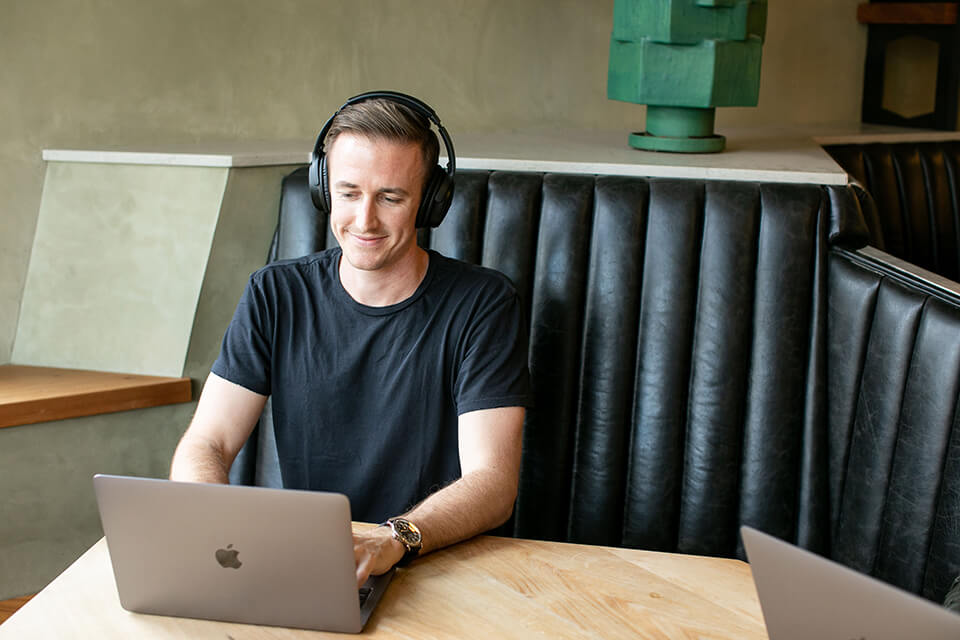
What is a travel blog niche?
A niche is a clearly defined set of topics, positioning, and style you want to specialize your blog around. Having a niche will help you stand out from the thousands of other travel blogs, and it’ll differentiate your content in a way that makes your travel blog more appealing to an audience seeking your specific type of content.
Travel blogging itself is a large niche within the overall industry of “blogging.” However, it’s such a broad blog topic idea that it has so many other sub-niche possibilities you can choose from—to both find your own style & message, as well as starting out in a less competitive space.
15 popular travel blog niches to explore in 2025:
- Budget travel
- Luxury travel
- Solo travel
- Remote work/digital nomad travel
- Female travel
- Backpacking
- Country blogging (traveling within your country)
- City blogging (focused on particular cities)
- Traveling for work
- Food-centric travel (visiting restaurants)
- Outdoor adventure travel
- Family travel
- National parks
- Traveling for seniors
- RV or van traveling (road-tripping and #vanlife)
As you can see, the options are truly unlimited when it comes to picking a niche for your travel blog—so the only constraints are your own imagination and what other people are interested in seeing content about. If there’s an audience of readers out there looking for inspiration on a certain type of travel, then there’s an opportunity to fill that need with your travel blog.
For some more inspiration on how I’m doing this with my hiking blog, Hike with Ryan—check out these posts:
- Best Gifts for Hikers
- Best Hiking Boots this Year
- Yosemite Day Hikes You Can’t Miss
- The Best Time to Visit Yosemite
A few ways you should think about narrowing your niche down is to pick a topic area that you both (1) love and (2) have clear monetization opportunities.
How do you pick a profitable travel blog niche?
The first step in making sure your prospective travel blog niche has real profit potential is to make sure there’s already an existing audience out there, craving the kind of content topics you’re considering starting a travel blog around.
- Do keyword research. The fastest way to estimate real-world demand for your travel blog niche is to do keyword research. That means using a free tool like Twinword Ideas or a more advanced tool suite like Ahrefs, to look up the most popular keywords within your prospective travel blogging niche. This will give you an indicator of what people are actively searching for online, how many of them are seeking content on these topics, and will give you insights about what they’re willing to spend money on.
- Conduct a competitor analysis. Competitor analysis simply means checking out what your competitors are already doing. Like it or not, every possible travel blogging niche (that’s worth getting into) will already have established competitors—but that’s a good thing. You can take a close look at their blogs, research their monetization strategies, and use tools like Ahrefs to learn how they drive traffic to their blog and set up Google Alerts to monitor their activities as well. Chances are, if your competitors are profiting from their travel blogs—you can do it too.
If you want a deeper dive into picking a clear, research-backed niche for your travel blog, read my in-depth guide: How to Pick a Niche to Blog About (+21 Profitable Niche Blog Examples).
Now that you’ve settled on a clear travel blogging niche, let’s tackle the next phase in your blogging journey.
2. Choose Your Travel Blog’s Name (Wisely)
Choosing a blog name (that’s both interesting and still has a .com available) for your travel blog, may not be so easy.
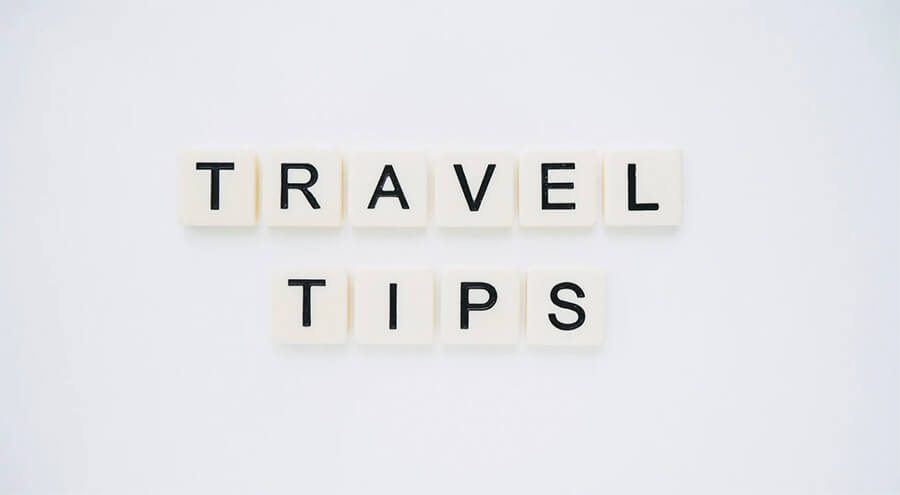
As a starting point, pay careful consideration to make sure you choose a travel blog name that:
- Is descriptive of your niche (if possible)
- Reflects your own brand and style
- Boosts your blog’s SEO opportunities (a name that includes your main keyword if possible)
Adapted straight from my ultimate guide about how to name a blog, here are a few quick tips and easy techniques that are specifically designed to help with naming your travel blog.
10 Quick Travel Blog Naming Tips and Techniques
- Read a book (or article) within your travel niche to uncover new words and potential names
- Dust off your thesaurus or dictionary and search for catchy words
- Try alliteration to come up with a travel blog name (Budget Boating, The Trippy Traveler, Wander Well)
- Find a good pun for your travel blog name (In Tents Camping, Girl Gone Travel)
- Use humor (Do You Even Travel?, Fit Bottomed Girls)
- Unrelated words can be more memorable
- Use your own name or nickname if you’re having trouble
- Brainstorm words that relate to your niche (wayfarer, grifter, vagrant, nomad, adventurer, wanderer)
- Take a break and try something new (go for a walk in nature to seek inspiration)
- Use made-up words (get creative, there are no wrong answers)
Another useful tip when picking a travel blog name is to avoid words that are either cliche (as they’ve been overused) or can be easily misspelled.
Also, make sure that your blog name is memorable as you’ll (ideally) be using it as your domain name as well.
Finally, here’s a quick video breakdown of my best advice on how to pick a strong name for a blog:
3. Select a Blog Hosting Platform
For your travel blog to be publicly viewable on the Internet, you’ll need to:
- Get a blog hosting plan
- Register your domain name (domain name generator)
Luckily, this process has become extremely easy to do—and is very affordable too (less than $3.00/mo).
What is blog hosting?
A hosting service is a company that owns servers and has the technology to make (and keep) your blog available online. Because of the important role your hosting platform plays in blogging, you’ll want to invest in a reliable hosting plan from day one. Failure to do so could mean your blog is offline at times, losing you valuable readers and telling search engines that your site isn’t reliable.
One of the most reliable hosting services, and the one I (and many other bloggers) highly recommend, is Bluehost. Not only is Bluehost one of the best all-around web hosting services on the market for the past 20 years, but they’re also extremely affordable—especially considering that their plans come with a free domain name included.
You can expect to get your blog hosted on Bluehost for $1.99/mo, which includes access to their 24/7 technical support team as well.
Another great reason to go with Bluehost for your travel blog hosting is that they also include a “one-click” WordPress installation immediately after you’ve signed up.
I highly recommend you use WordPress to power your blog, as it is a robust content management system (CMS) that’s also super easy to use and customize the design of your blog. According to recent blogging statistics, it’s by far the most popular blog platform in use by millions of bloggers around the world (including me here on this blog).
Now, that brings us to our next step in learning how to start a travel blog—designing the layout, look & feel of how your blog will look.
4. Design Your Travel Blog
Once you have a domain, have a server, and install WordPress you can dive into one of the most exciting parts of starting a travel blog (aside from the actual traveling of course)—designing your travel blog layout.
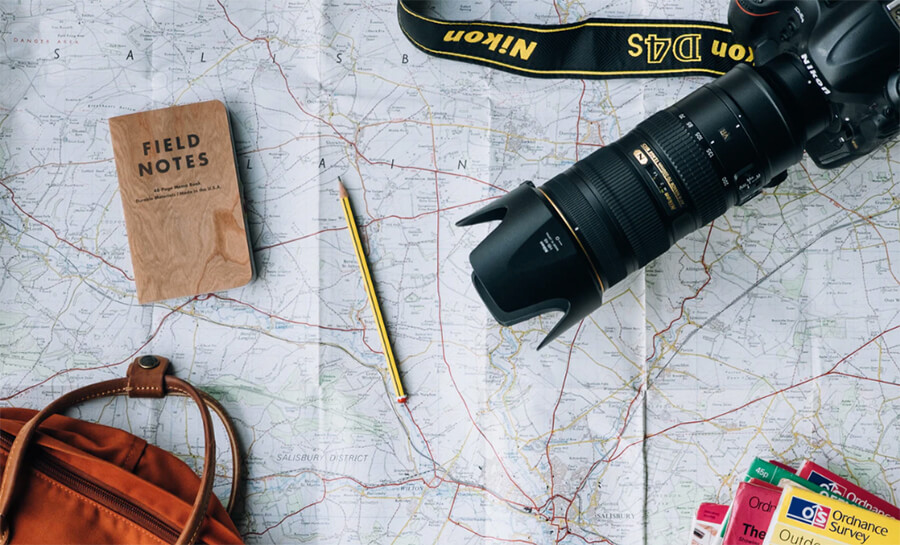
This stage is important, as it determines what your visitors will see and experience when they visit your travel blog.
A well-designed and easy-to-navigate travel blog also helps build trust with your audience. So how do you design the perfect travel blog?
Consider Your Branding
An important factor to consider when designing your travel blog is branding. Take, for example, the homepage design of my good friend Selena Taylor’s travel blog—Find Us Lost.
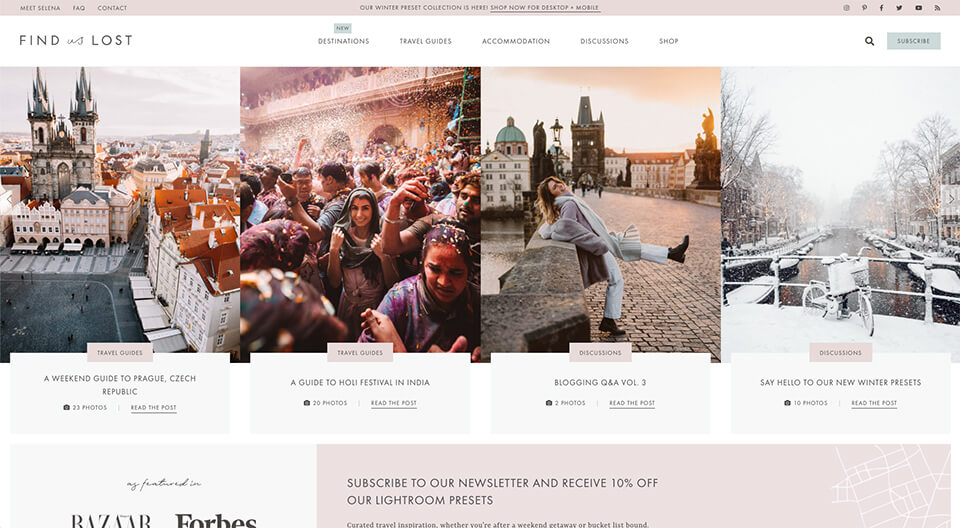
As you can see, there’s a very clear set of complementary colors, text styles, and prominent use of her original photographs being displayed on their homepage. Selena has a very well-defined brand for her travel blog.
Keep in mind that while today you may be an unknown (brand new) travel blogger, you must nail your branding right from the start.
The two most important aspects of travel blog branding you need to consider today are:
- Blog aesthetics. This deals with how your travel blog will look. Use colors and images that reflect your own unique approach to your niche.
- Blog personality. Your travel blog’s personality includes factors like your writing tone and conversation style. It also has to do with the vibe you want your blog to have—which will do a lot in terms of attracting (or repelling) certain types of people. Keep in mind too, that your travel blog’s About Me page will likely be frequented by readers, so put a little extra care into designing that page.
Use the Right WordPress Theme
A WordPress theme is a free (or low-cost) piece of software that you can install on your WordPress-powered blog, and it helps easily control/edit the overall look of your travel blog. You can find plenty of free themes on WordPress.org, some of the most popular include Kadence, Astra, and GeneratePress.
Every theme will give your blog a different visual layout and display your content in different ways. If you’re not sure which theme to use when starting your travel blog, I’d recommend evaluating my picks for the best WordPress themes as a starting point to evaluate all of the top options on the market today. For most new travel bloggers, I end up recommending they go with the free Elementor WordPress theme to get your blog off the ground and stay on a smart budget.
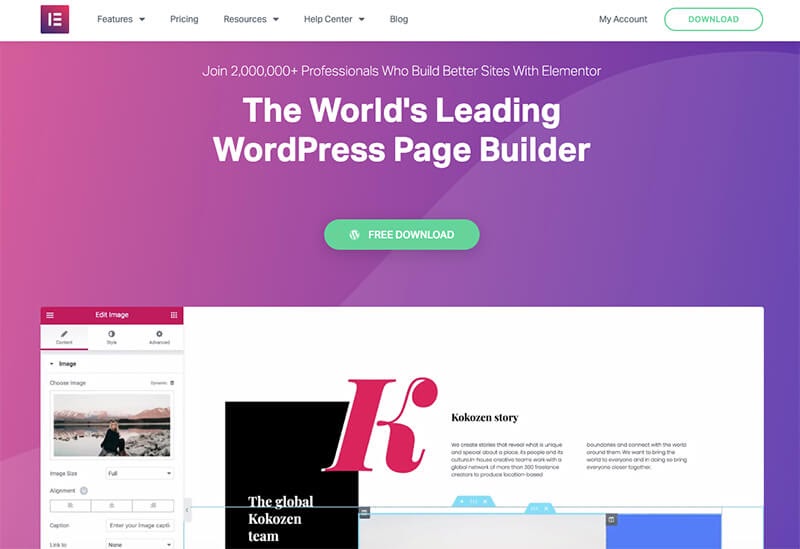
After installing your theme, it’s time to load up a few WordPress plugins that’ll add some additional functionality to your travel blog.
Install These 5 Functional Travel Blog Plugins
Just like a theme, a plugin is a (smaller) piece of software that enhances the look, feel, and features of your travel blog. The main difference is that while themes deal with the overall aesthetics of your blog, a plugin enhances a particular functionality.
Some handy plugins to help start a travel blog on the right foot include:
- Yoast SEO: Yoast SEO is one of the best plugins when it comes to improving your blog’s SEO performance, which will help you rank content higher in organic search results.
- Novashare: Novashare is one of the best social sharing plugins for WordPress. It allows visitors to your site to easily share your content with one click. Best of all it’s built with performance in mind so it won’t slow down your site.
- WP Google Maps: What’s a travel blog without maps of where you’ve been (and where you’re planning on going)? WP Google Maps is a simple plugin that allows you to create custom Google maps with high-quality markers containing categories, descriptions, images, links, and more.
- Modula Image Gallery: This is a great plugin that helps you efficiently, store, edit, and optimize your photos and images—which will be a large part of your travel blogging experience.
- WP Rocket: One of the best performance plugins for WordPress to keep your site running fast.
With these core design pillars in place, you can now start spending some time tweaking the design & functionality of your travel blog.
If you want to know how many visits go on your site you can use something like Google Analytics or Simple Analytics to track your traffic.
While this should absolutely be a fun learning experience, I recommend limiting the amount of time you allocate to perfecting your travel blog design and getting it to a level of “good enough” so that you can start shifting your focus over to the more important activities of traveling, creating content & building an audience.
For a more detailed, step-by-step tutorial on how to build your travel blog with WordPress, join my free course below.
Want my Free Course: How to Build a Blog in 7 Days?
Enter your name and email address and you’ll get instant access to my course that’s been featured on Forbes, Business Insider and Entrepreneur.
"*" indicates required fields
5. Plan Your First Travel Blogging Trip (and Involve Readers)
Now that your travel blog is up and running, it’s time to start planning your first trip (and content creation process).
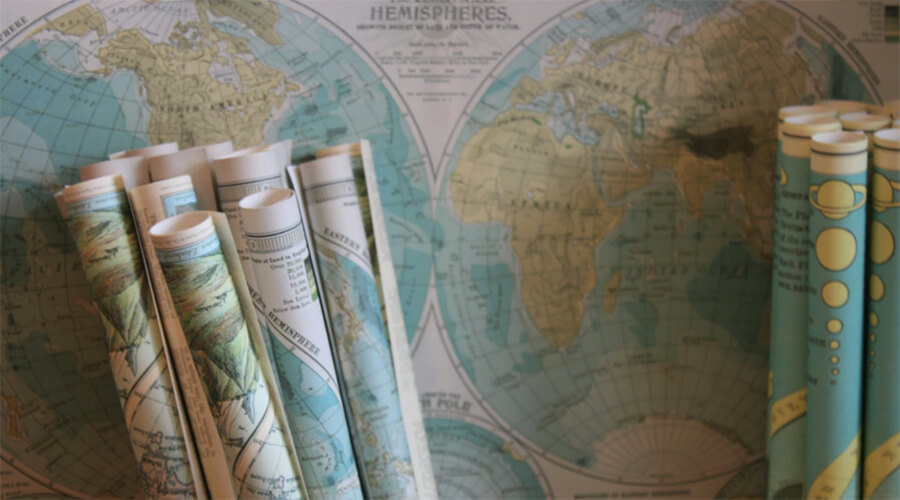
This section of our guide will look at planning a series of travel blogging trips that are attainable, on-budget, and interesting to your (future) audience—and doing so especially around your work if you still hold a full-time job.
Start with Close Destinations
If you’re still dependent on your day job, it can be difficult to travel as often as you may like. One way to overcome this challenge in the early days of your travel blog is to take short trips to nearby destinations. This will help you:
- Test out your equipment
- Practice taking photos (and videos)
- Try your hand at creating content for your blog
- Begin sharing on social media and interacting with potential readers
For your first couple of trips, I recommend choosing exciting nearby destinations, won’t take too much time to research & plan—and of course make sure they’re destinations your audience will be interested in.
Plan Your Trip Ahead of Time
While this may seem like an obvious step for travel bloggers, it still needs to be mentioned—the vast majority of travel bloggers plan their trips ahead of time (taking into account the locations they want to visit and content they want to get), rather than completely winging it when they show up at a new destination.
Consider also that you may want to schedule your trip to take place during an upcoming 3-day weekend so that you won’t need to take time off from work.
A few main things to focus on as you plan your first travel blogging trip include:
- Deciding on the destination and main facets of your trip
- Budgeting how much you want to spend (and how)
- Accommodations (hotel vs Airbnb)
- Meal planning (restaurants vs shopping & cooking)
- Travel style arrangements (solo or group)
- Documentation (what you want to capture and write about)
Make sure to keep a journal where you note everything about your travel plans.
Better yet, use your travel blog to journal about your trip preparation in public for your readers to see and learn from.
That process will not only help you perfect your own trip-planning process over time, but it’ll also forge stronger bonds with readers who feel they’re participating in the adventure with you. Plus, you may just get some good tips (or requests) for activities to do on your trip.
And if you’re having trouble with your content planning efforts, you can grab my free blog planner bundle and turn things up a notch today.
How to Use Your Trip Planning to Build Buzz for Your Travel Blog
So how can you use your travel planning to build a little excitement for your new travel blog?
- Announce your trip. A good way of getting readers (and future readers) excited about your trip, is to announce it on social media. Share your destination with everyone you’re connected to on your social media platforms, and invite them to join you in preparing for the trip. You can also let them know that they’re free to tag along on your trip by following the updates on your blog, on Instagram, or otherwise. You can even add links to your Instagram stories which will encourage your followers to click through and interact with you in a more meaningful way over on your blog.
- Involve your readers in equipment selection. If there’s any special gear you need to get in preparation for your trip, involve your readers by asking for recommendations or soliciting their votes on a decision. Doing so will help you spark conversations, as well as gather advice from others who’ve used the gear before.
- Run a contest. As you prepare your gear, use it as an opportunity to run a contest that can build your audience—whereby you give away an identical piece of equipment to a lucky new follower who interacts with your posts the most.
Another final point about successful trip planning for your travel blog is to read the accounts of other bloggers, writers, and photographers who’ve undertaken the same trip before you.
Bonus: Connect with influencers. I recommend letting these influencers know that you’re about to embark on the same trip—and that you found their content extremely helpful in planning your own version of the journey.
This is a great way to start building relationships with other travel bloggers in your niche. Who knows, they may even give you some tips on places to visit, advice for cutting costs, or they may even share about your trip to their own audience—helping you to in turn grow your own.
6. Balance Content Creation with Traveling
Alright, now it’s time to go on your much-awaited maiden trip as a travel blogger.
The sights are exhilarating, as are the experiences. But don’t forget—you also have to create content for your travel blog along the way. And by far the best time to document your journey (at least as a rough draft blog post or off-the-cuff notes), is while you’re experiencing it in real-time, day-to-day.

One of the biggest challenges of running a travel blog is that it’s so easy to forget (amidst the excitement) that you’re supposed to be creating content for your blog—ideally sharing behind the scenes with videos, short updates and still images from your Instagram account.
Here are a few tips for staying on top of your content game while traveling.
Do Your Research Beforehand
One of the most important things you can do for yourself as a travel blogger is to do your content research before embarking on your journey. Two areas you need to pay particular attention to include:
- Destination research. Research your destination as much as you can, to get ideas of what kind of content you can create around your trip. Before leaving for your trip, you should have a few clear blog post ideas already in mind to at least potentially write about and publish while you’re on your trip.
- Keyword research. As we’ve already touched upon earlier, keyword research is a very important aspect of travel blogging. Do the keyword research for a particular destination before you head out on the trip, and you’ll be able to choose a few specific activities to do while you’re there—and ensure there’s a pool of readers seeking that content online.
Researching as much as you can about your destination and everything around your upcoming trip will help lessen the burden of content creation while traveling.
Create a Content Calendar
A content calendar is a schedule of the exact content pieces you’re going to publish (in order). After doing the upfront research, your content calendar will tell you what you need to write a blog post about—and when it should go live.
To create your own editorial content calendar:
- Use your research. Use the keyword research you’ve done already, to come up with a few topics and ideas for the content you’re going to create about a particular trip/destination. Bonus points if you poll your audience for recommendations or experiences to document.
- Leverage your itinerary. Your itinerary isn’t just helpful for letting you know where you’re going and when. You can also use it to build a content calendar by creating content based on each restaurant you visit, activity you do and sights you see. Everything on your trip can be a content opportunity if you’re thinking strategically.
Once you have your content calendar in place, actually creating that content becomes a much more simple puzzle—you just fill in the blanks.
If you want a copy of the exact editorial calendar I use to plan my own blog content right here, then grab my free content calendar template today.
Take Beautiful Pictures
Your readers want to experience the journey with you. A great way of enabling them to do so is to capture and publish high-quality photos (and videos) to share along the way. This is where your reliable camera comes into play.
Be sure to take a healthy mix of both action shots (great for Instagram stories) and more carefully curated & edited scenic shots (best for your blog and posts to Instagram) to give your readers the best experience—and one they can tune into while you’re out on your trip.

You can also enhance the visual appeal of your blog posts by creating your own graphics and images.
One of the best blogging tools to help with creating your own unique images is Colorcinch, the free suite of design tools and resources that can aid in creating everything from logos to social-optimized graphics, shareable presentations, and more.
Creating Content Your Readers Will Love
As you know all too well by now, travel blogging can be pretty competitive—depending on the niche you’re in.
If your content is going to stand out from the hundreds (even thousands) of other travel bloggers out there, you’ll have to focus on creating content that’s:
- Unique. First and foremost, acknowledge that just about every square inch of this planet has been featured in a blog somewhere by now. To create unique content, you need to look for lesser-known spots, tell more stories, and take part in experiences that are off the beaten path.
- Useful. Most people who read travel blogs are in search of useful information they can use to plan their own trips, right? Make sure to focus heavily on meeting this need for your readers—and don’t be afraid to ask them how you can be more helpful with your content!
- Entertaining. Master a writing style that makes your words fly off the screen and form images in your reader’s mind. By making your blog posts entertaining and approachable, you can all but guarantee that your visitors will want to come back for more. A great way of doing this is to add some humor to your content, share raw video updates on your Instagram stories, and go out of your way to have fun with your readers.
Content is the backbone of every successful travel blog.
Without great content, there’s no incentive for people to want to follow along with your travel blog.
Speaking of followers… one very important aspect you need to master when learning how to start a travel blog is generating traffic to your blog (and building up your social following—which can be a dependable source of repeatable traffic for months and years to come).
7. Traffic: How to Get Readers to Your Travel Blog
Your travel blog is now live and you’ve got your first trip planned. The next step is kicking back and watching thousands of people rush over to devour your first pieces of content… right? Well, not quite.
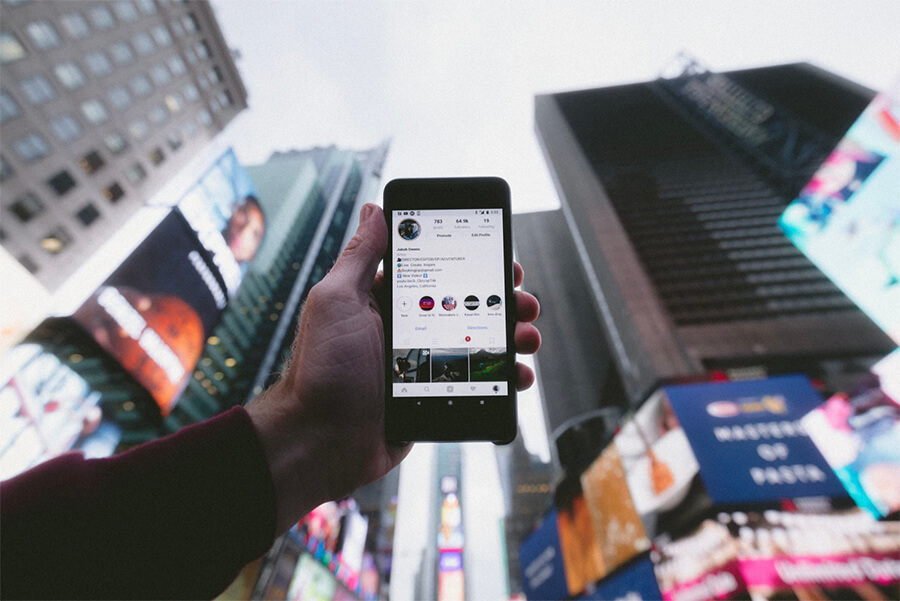
Gone are the days when getting tons of readers to your travel blog is as simple as placing a $100 advertising spend on Google, Facebook, and Instagram—or posting about your launch in a few travel forums across the Internet.
With over 1.5 billion websites on the Internet today (and more launching every day), you need to put in some real effort to break through the noise and get readers to your travel blog.
You’ll have to earn your traffic today, but therein lies the exciting and rewarding challenge. So how do you do that?
1. Keyword Research
There’s a reason why I’ve talked so much about the importance of doing proper keyword research before creating content for your travel blog—and it can’t be stressed enough how helpful this upfront research will be in your journey.
Take for example, this quick keyword search in Ahrefs for the phrase “things to do in Paris” here:
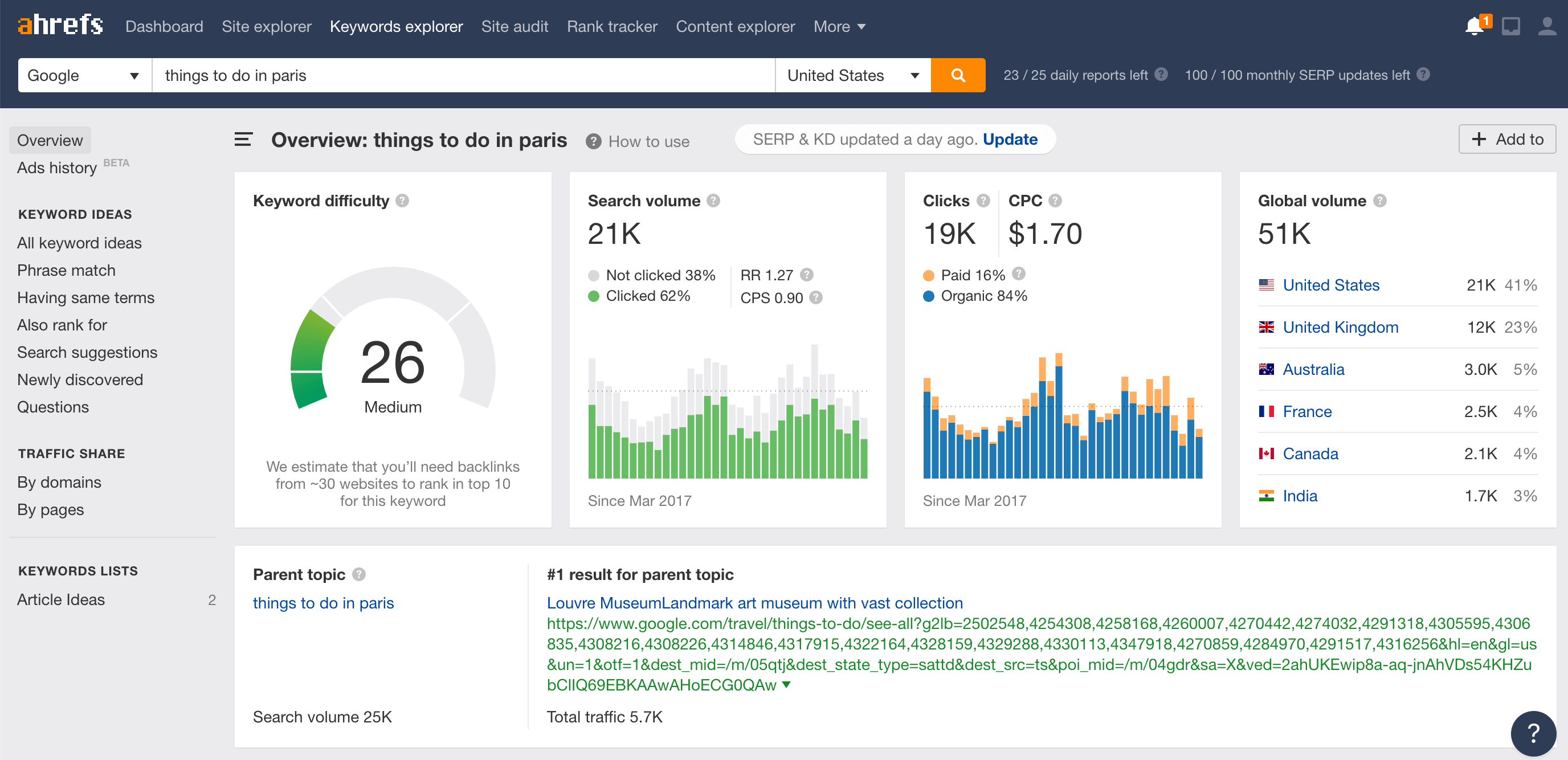
From this keyword research, you can learn several extremely important insights:
- An estimated 51,000 people are searching for “things to do in Paris” every month
- The level of competition (26 out of 100) is relatively medium-to-low for this keyword phrase, suggesting it’s a very good opportunity to target
- When you scroll further down, you’ll see the articles currently ranking at the top of this search result query—showing you the structure of their successful blog headline writing approaches and giving you insights about how to make your content more unique, useful, and entertaining
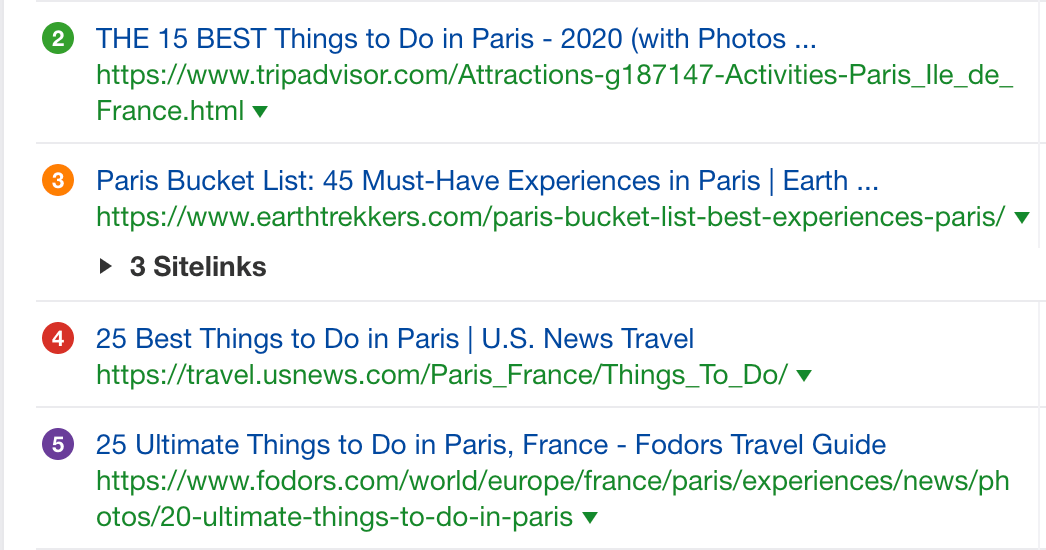
Remember that keyword research is the practice of finding the words and phrases your readers use when looking for certain information online—so you should always approach your research with an open mind about what you’ll find.
By choosing to publish content around keywords with relatively low competition (and as high traffic as possible without getting too impossibly competitive for a brand-new travel blog), you’ll start to carve out a little collection of long-tail keyword phrases you can rank for… and start bringing a trickle of traffic over to your blog.
2. Use Social Media (Especially Instagram & Pinterest)
Social media can be another great tool to drive traffic to your travel blog—especially channels like Instagram and Pinterest.

Because this kind of content is primarily visual-first, you’ll fare well on image-friendly platforms like Instagram and Pinterest where millions of daily users are actively seeking and engaging in travel-related content.
There are two main ways to use social media to drive traffic to your blog:
- Organic Reach. Driving traffic organically involves building a following on platforms that people who love travel-related topics enjoy spending their time on, and sharing your content with them. If you can put content they’ll love in front of them, then they’re more likely to share it with other people in their own network too.
- Paid Reach. This method involves boosting or sponsoring your posts. Most social media platforms have a feature where you can promote your social media posts to people who fit your target demographic, even if they’re not in your network today.
Because Instagram is such a popular platform for travel bloggers (and brands), it’s important to break down a few tips for growing an engaged audience on Instagram.
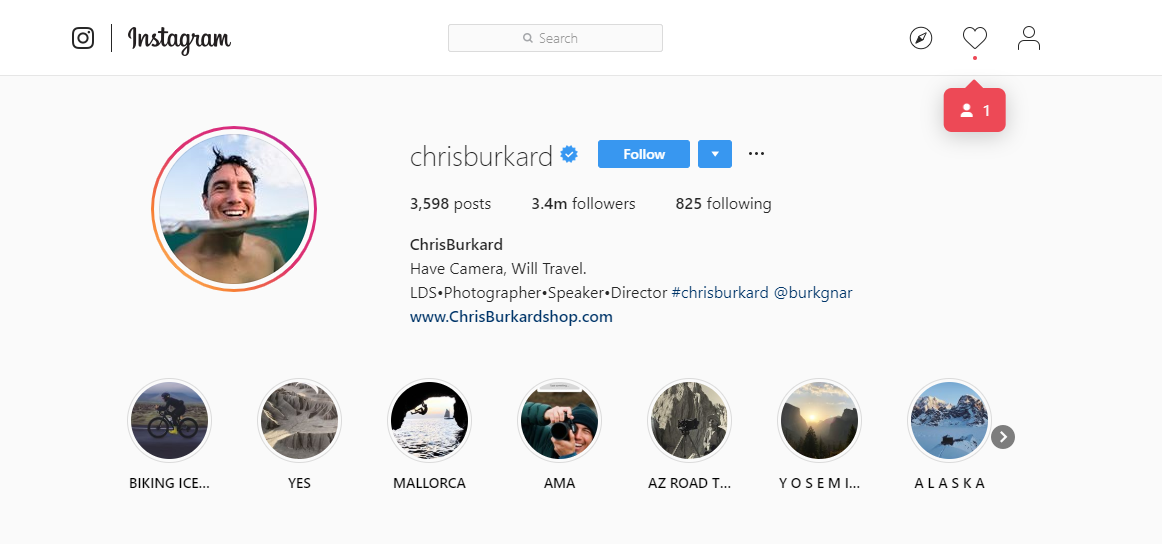
5 Quick Tips for Getting Followers on Instagram
- Nail your Instagram bio. Your bio is the first impression people will get from you. Make sure to craft a bio that clearly defines who you are, what you do, and what the mission of your travel blog is—in an interesting way. Don’t forget to include a link (and compelling call-to-action) to your blog in your bio.
- Create the right type of content. Images do very well on Instagram, however not all types of images. To discover the right type of images you should focus on creating and sharing, take a look at what works well for other travel bloggers in your niche (scenic and landscape images tend to do very well).
- Encourage interaction. Encourage your followers to like, share, and comment on your posts. Give them a good reason to interact by sharing more unique content than others in your space, rather than just posting the same tired image styles they’re seeing from everyone else in their feeds. Strive to find a creative image format that can become emblematic of your brand.
- Use smart hashtags. Hashtags are a great way to get your content discovered by the right people, as they help users navigate to content that’s most relevant to them. Research and compile a list of the most popular hashtags in your niche and use them strategically in the description of the photos you post on Instagram.
- Interact with other travel bloggers (and readers). Social media is about being social, not just sharing a one-way stream of images about your own life and hoping thousands of people will flock to watch. By interacting with other travel bloggers and your own readers on Instagram, you’ll learn more about how to best serve your audience, what they like, and what they want to see more of, and you’ll grow more engaged following as a result.
Don’t underestimate the power of social media in driving traffic to your travel blog. If done well, channels like Instagram and Pinterest can become your largest source of traffic.
3. Guest blogging
Another great way of driving highly relevant traffic to your travel blog is by guest blogging. Guest posting is the act of connecting with other travel bloggers (or travel publications) and publishing a “guest post” article on their sites. This blogging strategy alone is responsible for much of my blogging success, so I highly recommend prioritizing it in your travel blog promotion efforts.
For guest blogging to be successful, you need to:
- Target sites your ideal readers already visit and spend time on
- Build genuine relationships with the owners of those blogs
- Create content so unique, useful, and entertaining that they’ll be compelled to visit your blog
While it may seem counterintuitive to create a stellar piece of content and publish it for free elsewhere, it’s actually a great way to showcase your expertise—and if you’re posting on the right blogs, it’ll not only help attract more visitors but also build your own authority within your travel blogging niche.
Check out these two in-depth guides here on my blog for a detailed approach to successful guest blogging and beyond:
- Guest Blogging 101: How to Guest Blog Post (for SEO and Traffic)
- Blogger Outreach 101: How to Do Smart Blogger Outreach (+ Email Templates)
4. Harness the power of email marketing
Email may seem like an old-fashioned channel for disseminating information, but it’s actually one of the most efficient in driving targeted traffic to your travel blog—especially if you can partner with other more established travel bloggers or niche publications to get your content featured in their newsletters.
As time goes on and you build your own email list though, blog email marketing will involve sending an email to your own subscribers, updating them about new posts on your blog, asking them to follow along on your social channels, or keeping them posted on your upcoming travel plans (and how they can participate).
5. Network with other travel bloggers
As much as travel blogging can be a competitive industry, one good thing about blogging, is that not everything is a competition.
If anything, bloggers understand that the best way to grow their own blogs is by networking with their fellow bloggers who also reach the same (or similar) audience. From day one, you should build a habit of doing regular blogger outreach to build relationships and provide real value to the other bloggers in your niche.
Networking with other bloggers has many advantages over the long term, the main one being that other more established travel bloggers can increase your social following by sharing your posts with their audience.
8. Monetize Your Travel Blog with These 5 Methods
We’ve come to the final leg of our journey of how to start a travel blog—let’s talk about monetizing your travel blog.
For most people, getting paid to travel seems like a far-fetched dream. However, if you put in the work, you can make a full-time living from your travel blog. Let’s explore how, by leaning both on my own experiences learning how to make money blogging, and on the exact ways several successful travel bloggers I know, monetize their blogs today.
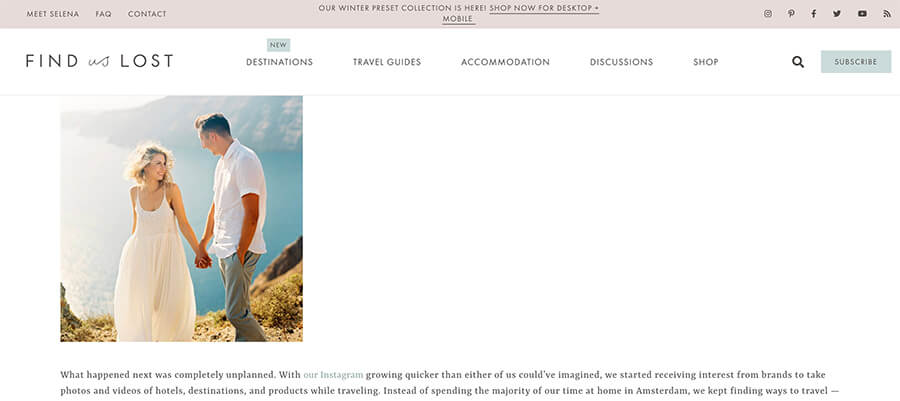
5 Proven Ways to Make Money Travel Blogging in 2025
Here are the top five ways travel bloggers make money from their blogs—and how you can too.
1. Affiliate Marketing
Affiliate marketing is one of the best methods for generating income from your travel blog (or any blog for that matter)—largely because it’s relatively passive and can earn revenue for you at any time of the day or night without any additional effort from your end. All it needs is qualified readers on your content.
This monetization channel works by joining the right best affiliate programs, creating content for your blog, and strategically placing links to relevant, useful products or services (within your content). When a reader clicks through and signs up or completes a sale based on your recommendation, you’ll earn a commission.
For this model to work, your content and the products you’re promoting have to be relevant to your target audience. This could be things like camera gear, hotel stays, flight recommendations, and more. Or you can take some inspiration from my roundup of honest Bluehost reviews, to see that you don’t even need to write your own exhaustive review about a product in your niche—if you can compile a useful list of all the other reviews out there on the market.
2. Content Sponsorships
Another way to earn money from your travel blog is through content sponsorships. With this monetization channel, you’ll get:
- Paid to create content. If there’s one thing every brand needs, it’s exposure. If you have a decent following on your travel blog, then brands will be excited about the opportunity to pay you for creating content (photos, videos, or articles) related to their products or services, with the expectation that they’ll see an uptick in engagement, interest or sales. You can often earn a little extra here by selling the brand (especially hotels) on a package deal that includes high-quality content the brand can also use to share on their own social media channels.
- Sponsored to promote companies. Many companies in the travel space will also sponsor your flights, and accommodations and even give you free gear in exchange for mentioning them in your blog posts and social media channels.
Sponsorship deals are extremely popular in the travel blogging space because they’re beneficial to both parties—even when you’re still relatively early on in your journey of learning how to start a travel blog, you can often land free or discounted trips, so it’s the perfect win-win channel to start with.
3. Creating and Selling Your Own Digital Products
Creating and selling your own digital products is another great way of generating revenue from your travel blog. While it’ll take a little more upfront work than other monetization methods, it can provide some of the best returns on investment over the long haul (if you create a useful digital product).
Examples of digital products you can create to monetize your travel blog include things like:
- Courses. Create a self-paced online course or even an in-person masterclass that you offer at a fee—catering to your audience’s needs of course. A great example of this is Jacob Riglin’s photography masterclass where you get to spend several days learning in-person, on location with the popular photographer.
- eBooks. Another digital product that can help you generate relatively passive income from your blog is a digital book (or eBook). Since my own audience here is made up of bloggers, I wrote an eBook aimed at helping newbie bloggers build successful habits around growing their audience, and it’s sold thousands of copies since I released it.
- Apps. While growing the downloads for your own iPhone app is a subject worthy of its own deep dive guide (like this guide here), offering a free or low-cost app can dramatically grow your audience and income if it takes off within your niche. Take the example of my friend Carrie, who blogs about her life traveling while being gluten-free. She recently launched an app that highlights thousands of gluten-free restaurants around the world, and it’s been downloaded several thousand times already—her monetization options could include things like allowing restaurants to promote their businesses, promoting her own products, or showing display advertisements.
Head over and see even more blog examples (including a few travel bloggers). Speaking of which, let’s talk about using display advertisements to monetize directly on your travel blog.
4. Display Advertising.
Selling ad space on your travel blog is by far one of the easiest ways to start earning money from your blog.
You can test the waters with display advertising by either reaching out to potential advertisers directly & striking a deal, or by joining a display ad network like Google AdSense and others that are more carefully curated to serve travel bloggers.
If you can succeed in building up a meaningful amount of traffic to your blog (tens of thousands of readers start to generate hundreds of dollars in monthly ad revenue), then this could be a great way to earn a passive income from the readers who are browsing content on your blog.
5. Selling Physical Products
Before you write this one off… no, you don’t need to keep physical product inventory on hand to build a successful travel blog around selling physical products.
Thanks to the proliferation of online marketplaces like Amazon and tools like Shopify or BigCommerce, you can leverage the wonders of drop-shipping to sell a physical product without it ever having to pass through your own hands.
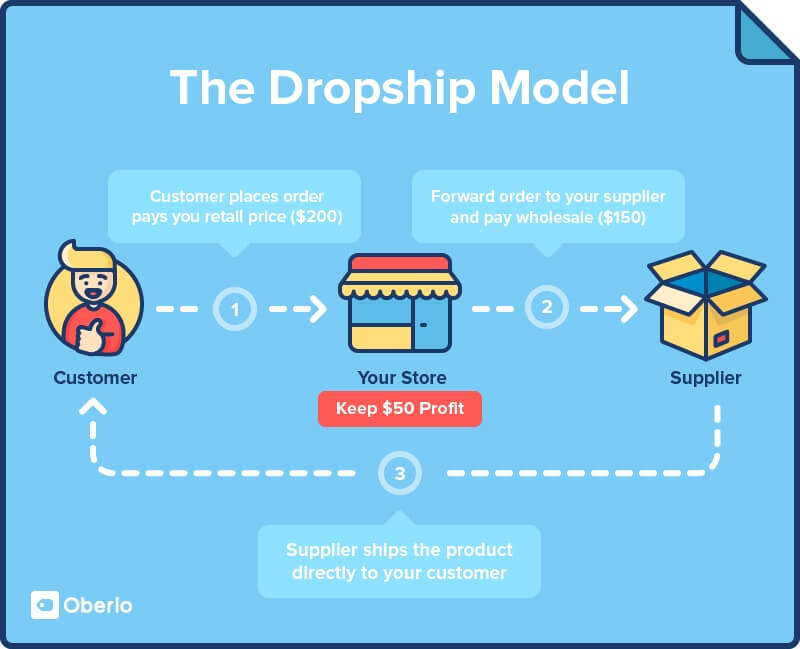
For an even more in-depth look at how to monetize your travel blog, check out my guide: How to Make Money Blogging This Year.
Final Thoughts on How to Start a Travel Blog (It Takes a Lot of Grit But It’s Worth It)
Well there you have it—everything it takes to learn how to start a travel blog (on the side) in 2025.
Sure, it’ll require a lot of hard work, patience, and deliberate experimentation in order to build a profitable business around your travel blog, but the results can be so incredibly rewarding.
By following this blueprint, you’ll be positioning yourself for a successful travel blogging journey.
And with enough time, it can even turn into your main source of income.
Want more tips on growing your blog readership fast? Be sure to check out my guide: How to Grow a Blog Quickly (on a Budget).


90 replies to “How to Start a Travel Blog (and Make Money Travel Blogging) in 2025”
As a travel blogger, these insights resonate! The right tools are essential for a successful journey into travel blogging. ✈📷🌍
This guide about starting a travel blog is really helpful and encouraging! It’s full of great info for people who want to travel and blog as a job. It shows all the steps to start, like picking what to write about and planning trips. It’s like a map for anyone who dreams of being a successful travel blogger. Well done Ryan for sharing such helpful tips!
thx
Wow, this comprehensive guide makes launching a travel blog seem not only achievable but thrilling! The practical tips and personal insights are truly inspiring. Ready to embark on my own journey!
This is such a helpful guide for anyone dreaming of combining travel with income in 2025! I love how you broke down the steps clearly—from choosing a niche to monetizing through affiliates and sponsored content. The tips on building an audience and staying consistent are super realistic too. With remote work and digital nomad lifestyles becoming more common, this post is timely and inspiring. Definitely bookmarking this to revisit as I start my own travel blog journey!
“This guide is incredibly thorough and inspiring! I love how you’ve broken down the travel blogging journey into manageable, actionable steps while also being transparent about the challenges that come with it. The personal touches, like sharing your own experiences and income milestones, make it both motivational and realistic. Especially appreciate the emphasis on choosing a niche and building a solid foundation—super helpful for anyone serious about turning their passion for travel into a career. Thanks for sharing such valuable insights!”